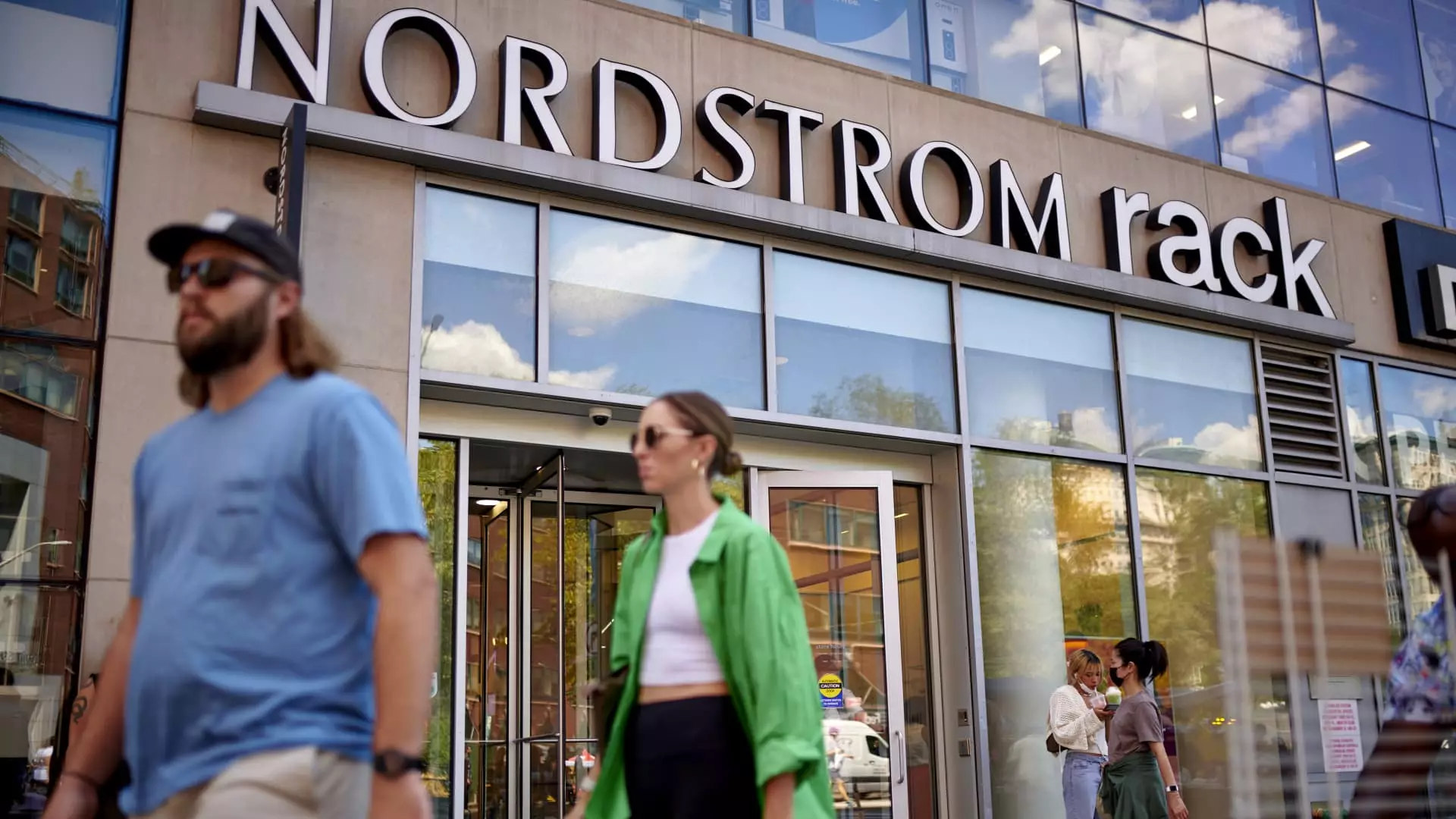In a recent financial update, Nordstrom showcased a performance that exceeded Wall Street’s expectations, thereby highlighting the department store’s ongoing efforts to enhance profitability and streamline operations. While the Seattle-based retail giant reported earnings per share that surpassed analyst predictions, its guidance for the upcoming fiscal year was notably conservative. Nordstrom’s results raise questions about the resilience of traditional retail in a challenging economic landscape, characterized by inflationary pressures and changing consumer behaviors.
Nordstrom reported adjusted earnings per share of 96 cents, significantly higher than the anticipated 71 cents. Despite falling slightly short on revenue, which amounted to $3.89 billion compared to the expected $3.90 billion, the overall positive earnings report lit a spark of investor enthusiasm. As a result, shares in the retailer climbed nearly 5% in after-hours trading, reflecting an optimistic reaction from shareholders driven by the promising earnings report. However, the company’s reported net income for the quarter was lower than the previous year, coming in at $122 million against $137 million in the same period last year.
The juxtaposition of falling profit against rising revenues poses a nuanced narrative. While growth in sales of about 3.4% year-on-year may seem encouraging, analysts remain apprehensive about the underlying factors influencing this growth, particularly concerning consumer spending patterns.
Looking ahead, Nordstrom has revised its forecast for adjusted earnings per share to a range between $1.75 and $2.05, an increase from a previous forecast of $1.65 to $2.05. While this reflects a modest optimism, it also underscores caution in its outlook. The company anticipates unchanged sales growth of between a 1% decline and 1% growth compared to the previous year. Such tepid projections signal an awareness of the current economic climate, where inflation continues to squeeze discretionary spending. As consumers reassess their spending priorities, Nordstrom’s guidance reflects an acute understanding of the need to adapt to shifting market conditions.
Nordstrom’s ability to navigate a crowded and competitive retail space is underpinned by operational improvements, especially in supply chain dynamics. During the latest quarter, the retailer reported that the delivery time for online orders had improved by over 5%, a detail that could enhance customer satisfaction and drive repeat business. By refining the logistics of merchandise delivery, Nordstrom is not only striving to reduce operational costs but also looking to improve conversion rates and decrease return levels—a critical concern for any retailer.
Investing in efficiency is crucial, particularly in an era where managing costs is synonymous with safeguarding profit margins. As inflation continues to impact consumers, the competitive landscape compels retailers to refine their operations and spend management, thereby shielding themselves from potential losses.
Furthermore, Nordstrom’s efforts to bolster its off-price division, Nordstrom Rack, are paying dividends. The company saw a robust 8.8% growth in sales at Nordstrom Rack, with comparable sales increasing by 4.1% year-on-year. This success is notable against the comparatively modest growth of Nordstrom’s primary business, which recorded only 0.9% increases in net and comparable sales.
The strategic push to increase the number of Nordstrom Rack locations—11 new openings already this fiscal year, with a target of at least 22—underscores the company’s commitment to tapping into a growing consumer segment eager for discounted goods. By focusing on well-known brands and bringing in experienced off-price professionals, Nordstrom aims to capitalize on the burgeoning demand for affordable luxury items in an increasingly frugal consumer environment.
Nordstrom’s recent performance paints a picture of a retailer caught in a balancing act: striving for growth while navigating the challenges posed by economic uncertainty and evolving consumer trends. With an optimistic yet cautious outlook, Nordstrom is demonstrating an understanding of the need to improve operational efficiencies and adapt to market expectations. However, the true test will lie in how well the company can sustain its momentum while addressing the potential headwinds posed by external market conditions. As consumer spending patterns continue to shift under economic pressure, Nordstrom’s strategic focus on its off-price segment may prove vital for its ongoing competitiveness in the retail landscape.

Leave a Reply